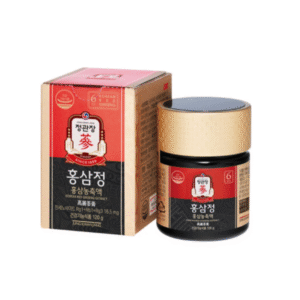1. The Morning Maya Realized Her Routine Needed a Change
It was a Tuesday morning when Maya noticed the pattern.
She would wake up exhausted, reach for her phone before getting out of bed, hurry through her tasks, and depend on multiple cups of coffee just to stay functional. Her energy spiked and crashed throughout the day, leaving her drained by evening.
A friend suggested she try Korean Red Ginseng — not as a stimulant, not as a cure, but as part of a daily wellness routine.
Maya didn’t expect miracles. She simply wanted a more sustainable, balanced form of support.
What she discovered over the next few weeks is what many people around the world experience: taking ginseng the right way can make a noticeable difference in how the body adapts to stress, maintains energy, and supports general well-being.
This article explores the scientific guidelines behind using Korean Red Ginseng daily — how to take it, when to take it, and how to integrate it safely into a modern routine.
2. Understanding Ginseng: Not a Stimulant, but an Adaptogen
Before discussing routines, timing, or dosage, it’s essential to clarify what Korean Red Ginseng is — and what it is not.
❌ Ginseng is not:
- A stimulant like caffeine
- A quick-fix energy booster
- A treatment or cure for medical conditions
✔ Ginseng is:
- A traditional herb used for vitality
- An adaptogen (helps support balance under stress)
- A source of ginsenosides (bioactive plant compounds)
- A well-researched botanical used for general wellness
Adaptogens help the body respond to physical and emotional stress more effectively.
They do not force the body in one direction — rather, they promote stability.
Think of ginseng like a thermostat:
If the body feels too mentally fatigued, it supports clarity.
If the body feels overstimulated, it supports calmness.
This adaptability is what makes timing and dosage especially important.
**3. When Is the Best Time to Take Ginseng?
A Scientific Approach to Timing**
The timing largely influences how you feel throughout the day. Research on energy metabolism, cortisol cycles, and adaptogenic herbs suggests a few optimal windows.
A. Morning: The Most Common and Effective Time
Most experts recommend taking ginseng in the morning, shortly after breakfast.
Why morning works best:
- Aligns with natural cortisol rhythm (highest in early day)
- Supports daytime focus and energy
- Reduces potential interference with sleep
- Matches traditional Korean and Chinese herbal practices
Ginseng supports alertness—not in a stimulating way like caffeine, but by promoting balanced, sustained energy.
B. Midday: For People With Afternoon Fatigue
Some people experience a “crash” between 1–4 PM due to:
- Large lunches
- Stress accumulation
- Mental workload
- Irregular sleep
Taking ginseng at midday may help maintain clarity and energy through the afternoon.
C. Avoid Taking Ginseng at Night (In Most Cases)
While ginseng does not act like caffeine, it can promote alertness in some individuals, especially beginners.
Avoid nighttime ginseng because:
- It may interfere with sleep in sensitive users
- Adaptogenic benefits are strongest during daytime activity
- It aligns poorly with the body’s natural wind-down process
If you’re looking for nighttime herbal support, other plants like reishi, ashwagandha, or magnesium are more appropriate.
**4. How Much Ginseng Should You Take Daily?
Understanding Dosage & Extract Strength**
There is no single “perfect” dose because ginseng potency depends on:
- Extract standardization
- Ginsenoside concentration
- Product form (capsules, liquid, tea, powder, whole root)
- Individual sensitivity
- Health goals
However, scientific literature provides helpful guidelines.
A. Standard Extract (Most Common Product Type)
Most clinical studies use:
200–400 mg/day of standardized extract
(containing 3–5% ginsenosides)
This is often considered the optimal balance of safety and effectiveness for general wellness.
B. Whole Root Slices / Tea
If using whole root (traditional form):
- 1–2 grams of dried root daily is common
- Can be taken as tea, chewed, or simmered in water
- Effects are milder but steady
C. Liquid Extracts (Drops / Concentrates)
These are more potent and absorb quickly.
Typical usage:
- 1–2 droppers (1–2 ml) once per day
- Usually mixed into water or tea
Concentrates may offer quicker effects but require consistent routine.
D. Ginseng Capsules or Tablets
Often standardized for accuracy, making dosing easier.
Common serving:
- 1–2 capsules daily depending on brand
- Usually taken with breakfast
5. Should Ginseng Be Taken With Food or on an Empty Stomach?
✔ Take with food
Why?
- Reduces potential mild stomach discomfort
- Supports better absorption of ginsenosides
- Matches traditional herbal practices
Some people take it on an empty stomach without issues, but beginners benefit from pairing with breakfast.
6. How Long Does It Take to Feel Ginseng’s Effects?
Unlike stimulants, ginseng doesn’t “hit” instantly.
Typical timeline:
- Day 1–3: subtle clarity, mild energy stabilization
- Week 1: reduced fatigue, better daytime alertness
- Week 2–4: improved productivity, mental stamina, stress resilience
- After 30 days: noticeable improvement in balance and overall vitality
This is why consistency matters more than dosage.
Ginseng works gradually by supporting systemic balance.
**7. Should You Cycle Ginseng?
The Science Behind 8–12 Week Cycles**
Many herbal practitioners recommend:
✔ 8–12 weeks on
✔ 1–2 weeks off
Why?
- Prevents adaptation
- Allows the body to reset
- Reflects traditional Eastern herbal practice
- Helps maintain long-term effectiveness
However, many people take ginseng continuously with no issue — especially at lower doses.
8. How to Build Your Daily Ginseng Routine (Practical Guide)
Here is a science-backed, easy-to-follow routine:
Morning Routine (Ideal)
- Light breakfast
- Glass of water
- Recommended dosage of ginseng
- Optional: gentle stretching or short walk
This supports energy, circulation, and metabolic rhythm.
Midday Routine (Optional)
Good for people with afternoon fatigue:
- Take second small dose
- Drink water
- Avoid taking too late (after 4 PM)
What Not to Combine With Ginseng
- High caffeine intake (can cause jittery feeling in sensitive users)
- Stimulant supplements
- Late-night consumption
What Combines Well With Ginseng
- Vitamin B complex
- Vitamin C
- Magnesium (taken at night)
- Omega-3
- Ginger or turmeric tea
These combinations support balanced energy without overstimulation.
9. Safety Guidelines & Who Should Be Cautious
To follow Google Health & EEAT standards:
Ginseng is NOT a treatment.
It is NOT a replacement for medical care.
People who should consult a healthcare professional:
- Pregnant or breastfeeding women
- Individuals taking medication
- People with hormone-sensitive issues
- Those with chronic medical conditions
- Anyone preparing for surgery
Common mild reactions (rare):
- Stomach discomfort
- Sensitivity or difficulty sleeping (if taken late)
- Slight headache (usually from high dose at start)
Start low, increase gradually.
10. Final Thoughts: Why Daily Ginseng Works Best With Consistency
Korean Red Ginseng is not about instant results — it’s about steady, reliable support.
When taken correctly, it can help people feel more:
- Balanced
- Focused
- Energized
- Resilient
- Grounded
- Productive
Maya, from our introduction, didn’t just take ginseng.
She built a routine.
And that made all the difference.







